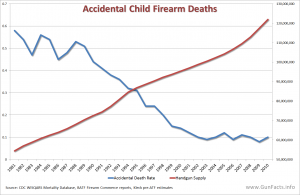Getting ready to teach several classes on Instructor Development this year — the soonest one is coming up fast! That class will be held at KR Training in TX and I’m very excited about it.
During a longer conversation on Fb, I had just recommended several awesome, non-NRA instructor development classes from various schools and trainers when someone asked me:
“… ultimately, what qualifies them and you to teach instructors or instructor development?”
That’s what we call a Darn Good Question. It’s easy enough to look at someone’s credentials to teach defensive handgun courses, but what qualifies them to teach instructor development classes? What qualifies them to train the trainers?
In my case, any prospective student can see my training resume on this website on the “About” page — although it’s a little bit out of date right now, as it does not make any recent updates to the number of hours I’ve spent learning from others over the past couple of years. Over the past few months alone, I’ve added several NRA credentials and a 2 day private class from John and Vicki Farnam, and will have a weeklong Gunsite course under my belt by mid-April.
In addition to spending some 16 years of continuous study under some of the best instructors in the business, I also have put myself out there in writing. Potential students who wonder about my background can read an extensive, informative website where I have written in sometimes-exhaustive detail about my training philosophies, preferred techniques, mindset, and ideas about defensive firearms use. Or they can read one or both of the two books I’ve written (soon to be joined by a third), or the archives of Concealed Carry Magazine, where I served as editor for more than four years.
As students read the things I’ve written, if they are paying attention, they will soon realize that I have extensively studied the dynamics of violent crime, criminal mindset, how deadly events happen, use of force law, social patterns of behavior, human body language, teaching skills, public speaking skills, the history and use of concealed carry holsters, and a host of other subjects of interest to the armed citizen. I’m not shy about telling people what material I’ve drawn from in my writing — both of my books, and my website, are heavily footnoted — and I encourage others to study the source material as I have. I’m also (sometimes bitterly!) aware of all I don’t know and haven’t yet learned, so I’m constantly driven to learn more. That, too, shows through in my writing.
There’s also the little matter of serving as a staff instructor at one of the most highly-regarded schools in the country for more than thirteen years now, beginning as an apprentice and continuing on to become one of the lead instructors at that school. Or that over the past five years (still on staff at FAS, still teaching there when I’m home) I’ve also been running my own training company, teaching both co-ed and women-only defensive handgun classes throughout the country at many different facilities.
During my time at FAS, in addition to studying under Marty and Gila Hayes (who both have solid, nationally-recognized reputations), I have also worked alongside many highly-experienced and competent firearms instructors, and have learned from them at every opportunity. FAS hosts many of the best trainers in the industry, and so (in addition to the classes formally recorded on my resume) I’ve often had a “fly on the wall” view of these trainers when I’ve worked as an assistant in their classes. That has given me a tremendous opportunity to concentrate not just on the what of their classes’ content (as students do), but to really focus on how these master instructors present their material and run their ranges — and I’ve kept extensive notes on that over the years.
I can also point to students I have worked with, who review and recommend the classes they have taken from me. They say things like:
- “If you’re looking to build your own curriculum, run it safely and effectively while minimizing risks to yourself and your students, this is a class you should take.” — Melody Lauer
- “For anyone interested in improving their performance as an instructor, I highly recommend this class. It distills a lot of the tribal knowledge that has been developed over the years at FAS, Gunsite, and other ranges and presents it in an organized package that is a boon to any instructor. Bring an open mind and an empty notebook, because you’ll fill them both up with knowledge.” — Tamara Keel, writing in Shooting Illustrated.
So what we have there is a mix of education, training, and practice in the art and science of teaching students how to use guns to defend their own lives. Over the past decade and a half, I’ve had many good models and I’ve studied those models with a great deal of care. And I have freely shared what I have learned, and where I have learned it, so that prospective instructors can easily discover my background.
For the others I mentioned (Marty & Gila Hayes of FAS, John & Vicki Farnam of DTI, Tom & Lynn Givens of Rangemaster, Massad Ayoob of MAG), you’d have to ask them what qualifies them to train others how to teach. But I will tell you right now that most of their training and teaching resumes far outshine my own, either because nearly all of them started a decade or more before I did, or because they began with a vocational or experiental background that I lack. These are people I deeply respect and admire. But I am in no way ashamed of my own experience or ability to teach.








